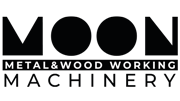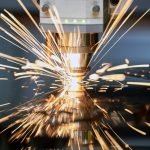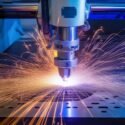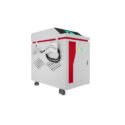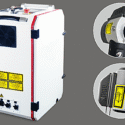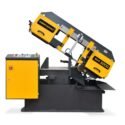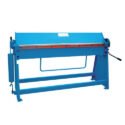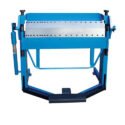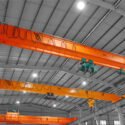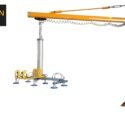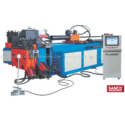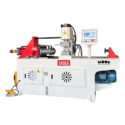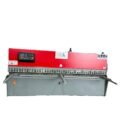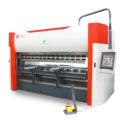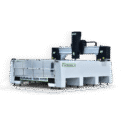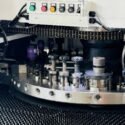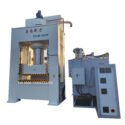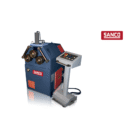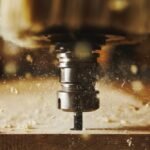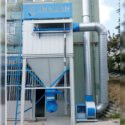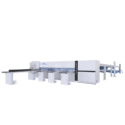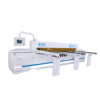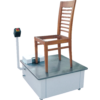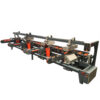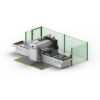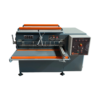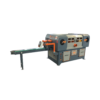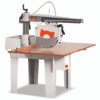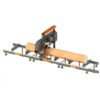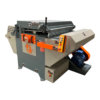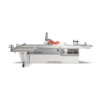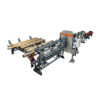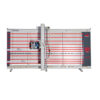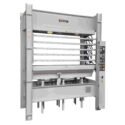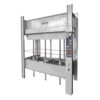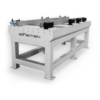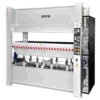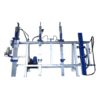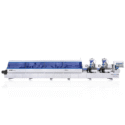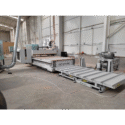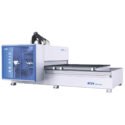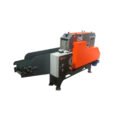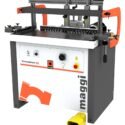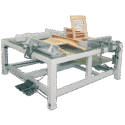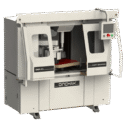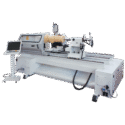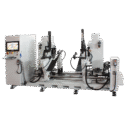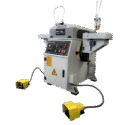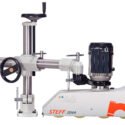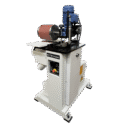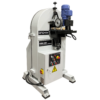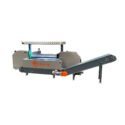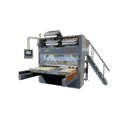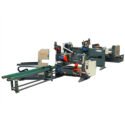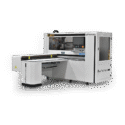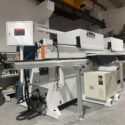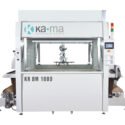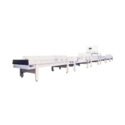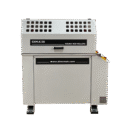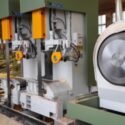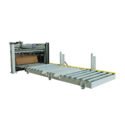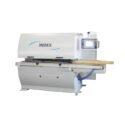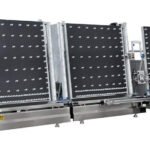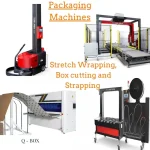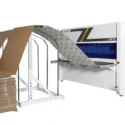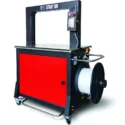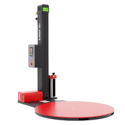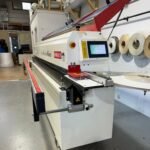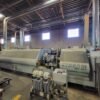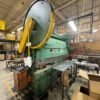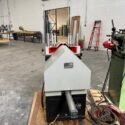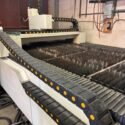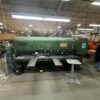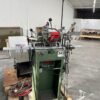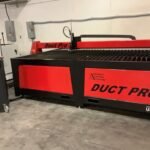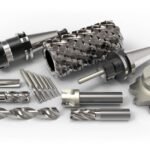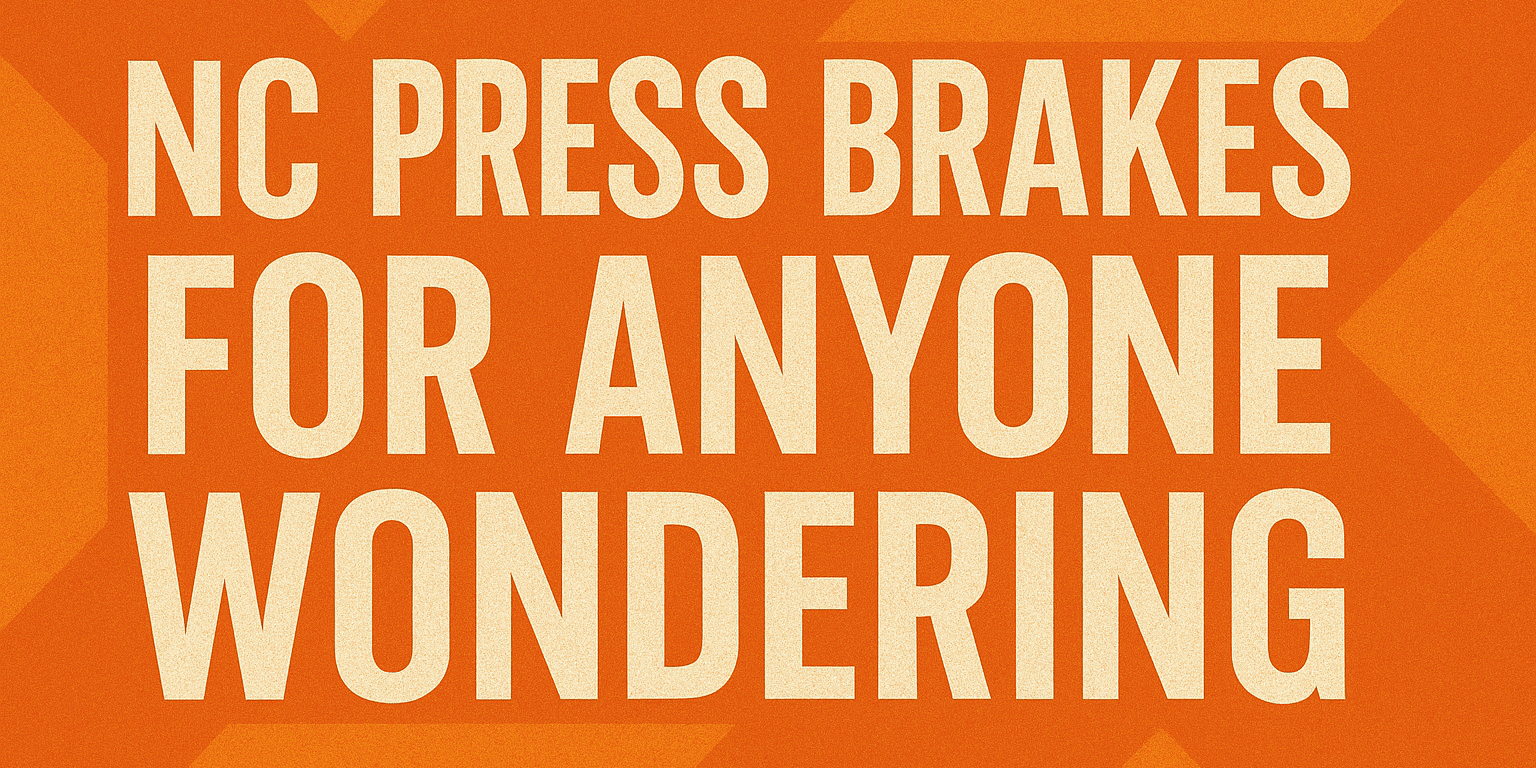In metalworking, Press Brakes are fairly common but what are NC Press Brakes, exactly?
Throughout the course of this article, we will give you information on, not only what an NC Press Brake is, but also how they work, their key features, benefits, limitations, as well as considerations when buying one.
We want you to finish reading this article, feeling at least a little bit more knowledgeable about NC Press Brakes, and more confident in knowing what to ask for when looking to buy one.
What is an NC Press Brake?
Let’s start off with breaking down the terms.
NC stands for Numerical Control. This means that the machine tools are controlled by numerical data entered in the NC Controller by the operator, but the operator still needs to be fairly skilled to adjust the material between bends and maintain precision and consistency.
As for “press”, in 1300, the word “presse” was used as a noun meaning to crush or crowd. In the 14th century, the word “press” meant a device for pressing clothes or squeezing out juice. However, now, “press” means a machine or mechanism that applies force by squeezing.
The word “brake”‘s 15th century definition was an instrument used for crushing or pounding. Eventually, “brake” became synonymous with “machine” which means that saying press machine is the same thing as press brake.
Therefore, an NC Press Brake is a semi-automatic metal bending machine, most of which are Torsion Bar Press Brakes, that presses metal into its dies in order to achieve the bend angle needed for specific jobs.
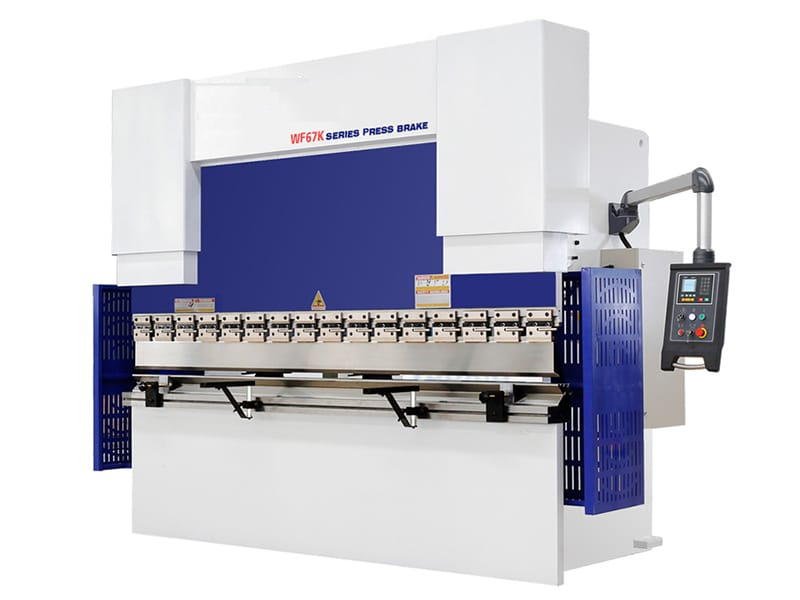
How Does It Work?
The NC Press Brake has the same key components as the CNC Press Brake.
The Ram applies the pressure. The Bed supports the material. The Dies shape the material. The Backgauges ensure precise positioning. The Frame provides structural integrity to the machine.
However, instead of the CNC controller, it’s an NC Controller, and since most NC Press Brakes are Torsion Bar Press Brakes (but not all), we can torsion bars are also part of the main components.
First, let’s dive a bit deeper into the NC Controller.
The NC Press Brake uses a numerical control system in the NC Controller in order to direct the machine’s movements and also its bending applications. The machine’s operator would input numerical values such as the angle, the material thickness, and the ram position to control the positioning of the back gauges and the ram itself. It is fairly basic automation with manual intervention needed.
It is an open loop system, meaning that after the operator inputs values and the machine runs, the controller would not be receiving any sort of feedback signal.
Let’s now dive a little deeper on the Dies.
The male die, also called the upper tool or punch, is secured to the Ram of the Press Brake. It experts a controlled force onto the workpiece, which drives it into the female die in order to create the desired shape. There are multiple types such as straight punches, gooseneck punches, hemming punches, and rotational punches.
The female die, also called the lower tool, is secured to the Bed of the Press Brake. It provides a precisely shaped groove that matches the male die’s geometry and accommodates the material during the bending process. The different types are V-shaped dies, U-shaped dies, offset dies, and adjustable dies.
Finally, let’s take a closer look at the torsion bars.
The Torsion Bar NC Press Brakes typically have 2 torsion bars connected to the machine frame. These bars are used to transmit motion using linkages and a rocker arm in order to achieve synchronized movements of both the upper and lower dies to bend workpieces.
Advantages
The NC Press Brake does come with some advantages:
- Lower initial investment cost.
- Simplicity, meaning that there are fewer complex features making it easier to maintain.
- Reliability, meaning that it has a robust performance and durability with proper maintenance due to it simplicity.
Applications
NC Press Brakes are best suited for more simple, low volume tasks that do not require high precision. Therefore, the applications where they would be most useful would be the following.
Construction: They can bend basic metal components like brackets, supports, and framing elements.
HVAC: They can bend sheet metal for ducts, vents, and other ventilation components.
Light Manufacturing: Small businesses or workshops that produce simple metal parts with moderate to low precision requirements.
Signage: They can do repetitive bending of similar materials.
Considerations When Choosing One
There are many things that you should consider before buying an NC Press Brake, but let’s take a look at a few.
Production Volume and Complexity: The NC Press Brake is better for simpler, lower volume tasks.
Precision Requirements: This type of press brake is typically used for work that demands less precision.
Material Handling: Although the NC Press Brake can handle a variety of materials, it does need to be adjusted for every type of material. Therefore, it would not be best suited for work that sees a wide variety of materials.
Flexibility and Future Needs: The NC Press Brake would be a decent choice for a steady output of similar jobs.
Budget Constraints: Numerical Control Press Brakes are less costly initially and better for smaller businesses and workshops that do not have the budget or necessity for a more expensive CNC Press Brake currently.
Maintenance and Operating Costs: There are lower maintenance costs with this type of Press Brake due to its more simple construction.
Conclusion
An NC Press Brake offers a practical, cost-effective solution for simpler, low-volume metal bending tasks.
With its straightforward numerical control system, robust construction, and ease of maintenance, it’s a dependable choice for workshops, small manufacturers, and industries where extreme precision isn’t the top priority.
While it lacks the advanced automation and feedback systems of CNC models, its lower cost and reliability make it an appealing option for those with consistent, less complex production needs.
By understanding its components, operation, and limitations, you can confidently determine whether an NC Press Brake aligns with your budget, production requirements, and long-term goals.
If you are looking for any additional information or have any questions, do not hesitate to contact us here.
References
Lee, C. (2024, March 18). NC Press Brake vs CNC Press Brake: What Are the Differences and How to Choose? ACCURL. Retrieved August 14, 2025, from https://www.accurl.com/blog/nc-vs-cnc-press-brake/
SC Machinery. (2024, October 10). Differences between NC press brakes and CNC press brakes. Retrieved August 14, 2025, from https://www.shen-chong.com/differences-between-nc-press-brakes-and-cnc-press-brakes/
Weiya. (2024, July 10). CNC Press Brake vs NC Press Brake – Weiya Machinery Technology Co., Ltd. Weiya Machinery Technology Co., Ltd. Retrieved August 14, 2025, from https://www.weiyamt.com/cnc-press-brake-vs-nc-press-brake/
